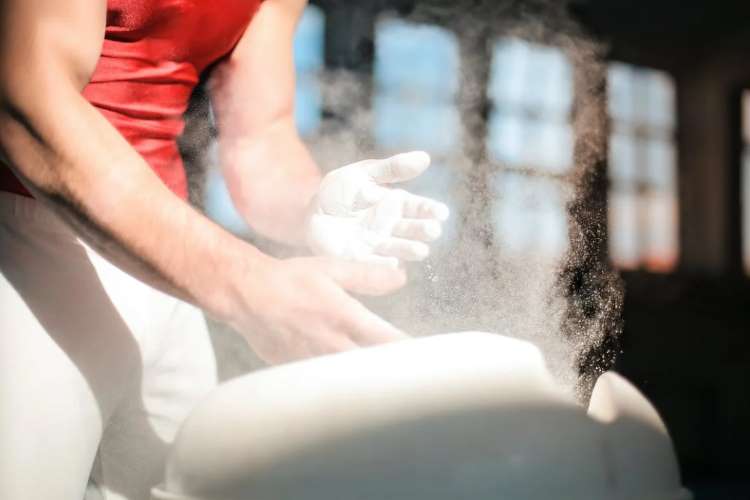
The $2.5 billion global talc powder industry was shaken to its foundations by a media statement from Johnson & Johnson on August 11, 2022. The US multinational, a global leader in child care products, announced that its talc-based baby powder will be discontinued globally next year as part of a portfolio assessment.
The J&J decision was definitely influenced by the 38,000 lawsuits by survivors claiming that its talc products caused cancer due to asbestos contamination. However, Johnson & Johnson claims that its baby powder does not contain asbestos and does not cause cancer, as it looks to save itself from the liabilities emerging from the litigation.
The American Academy of Paediatrics (AAP) recommends against the use of baby powder since babies do not need it (or most other lotions and oils, for that matter), and it can sometimes irritate their delicate skin. The AAP also says that baby powder can be harmful to little ones if inhaled.
READ I Climate endgame: Governments must prepare for worst-case scenarios
Johnson & Johnson’s decision to transition from talc-based baby powder to corn-starch-based products is an example of commercial determinants impacting health of consumers in both developed and developing countries.
According to the WHO, the commercial determinants of health are the conditions, actions and omissions by corporate actors that affect health. Commercial determinants arise in the provision of goods or services for payment and include commercial activities and the environment in which commerce occurs. (WHO 2021)
Talc powder under lens since 1972
Johnson & Johnson was aware of the possibility of carcinogenic particles in their talc powder. Three tests by different agencies between 1972 and 1975 had found traces of asbestos in its talc.” However, the company chose not to inform the US Food and Drug Administration (FDA), the agency responsible for protecting public health by ensuring the safety, efficacy, and security of human and veterinary drugs, biological products, and medical devices.
The University of Minnesota Space Science Centre in 1972 tested Johnson & Johnson talc powder samples for asbestos and recorded small amounts of asbestos found in the samples, with perfect chrysotile patterns of incontrovertible asbestos.

A Reuters examination of documents, depositions and trial testimonies show that from at least 1971 to the early 2000s, showed that the company’s raw talc and finished powders sometimes tested positive for small amounts of asbestos. The documents reveal successful attempts to influence US regulators. Some of these documents have been produced at trial and cited in media reports. However, many were shielded from public view by court orders that allowed J&J to turn over thousands of documents it designated as confidential.
READ I Covid-19 loosens its grip, but is the worst over?
Several studies have shown that talcum powder particles (applied to the vaginal area or on sanitary napkins, diaphragms, or condoms) increase the risk of ovarian cancer as they travel to the ovaries. Based on cancer studies in people exposed to talc, the International Agency for Research on Cancer (IARC) classified the use of talcum powder in the vaginal area as ‘probably carcinogenic’.
Berge, Mundt, Luu and Boffetta (2018) analysed the genital use of talc powder and the risk of ovarian cancer. This meta-analysis showed weak but statistically significant association between use of talc and ovarian cancer. However, the authors concluded that the heterogeneity of results by study design detracts from a causal interpretation of this association.
Coggiola M, Bosio D, Pira E, et al. (2003) studied the mortality rates of talc miners and millers in Italy. This study supports an association between talc in mining and milling and non-neoplastic respiratory diseases while showing no significant risk for lung cancer and mesothelioma.
The result of a study on perineal powder exposure and the risk of ovarian cancer by Cook, L. S., Kamb, M. L., & Weiss, N. S. (1997) offer support for the hypothesis raised by prior epidemiologic studies that powder exposure from perineal dusting contributes to the development of ovarian cancer. They suggest that using genital deodorant sprays may do so as well. Limitations of the study include the reasonably low proportion of eligible women who participated and the potential differential recall of powder usage.
Based on few human studies and limited data in lab animal studies, IARC classifies inhaled talc not containing asbestos as “not classifiable as to carcinogenicity in humans.” IARC also classifies genital use of talc-based body powder as possibly carcinogenic.
American Cancer Society’s consumer advice says it is not clear if consumer products containing talcum powder increase cancer risk. Studies on talcum powder have had mixed results, although there is a suggestion of an increase in ovarian cancer risk. There is very little evidence now that other forms of cancer are linked with consumer use of talcum powder.
Johnson & Johnson faces over 3,000 lawsuits on its baby powder products that women claim caused their ovarian cancer. Despite numerous verdicts, the most recent of which was for $110 million, Johnson & Johnson maintains that its talc-based products are safe and refuse to include a warning label.
Johnson & Johnson will continue exposing people to asbestos-laden talcum powder throughout 2022 in many developing countries unless those countries stop the sale of talcum powder with immediate effect. Unfortunately, companies like Johnson & Johnson have been insensitive to the public health concerns of developing countries for quite a long time.
ToxicsWatch Alliance has been pushing for a ban on the sale of asbestos-laden talc powder with the DCGI, DGHS, and Union Ministry of Health and Family Welfare for several years without success.
Dr Joe Thomas is Global Public Health Chair at Sustainable Policy Solutions Foundation, a policy think tank based in New Delhi. He is also Professor of Public Health at Institute of Health and Management, Victoria, Australia. Opinions expressed in this article are personal.


